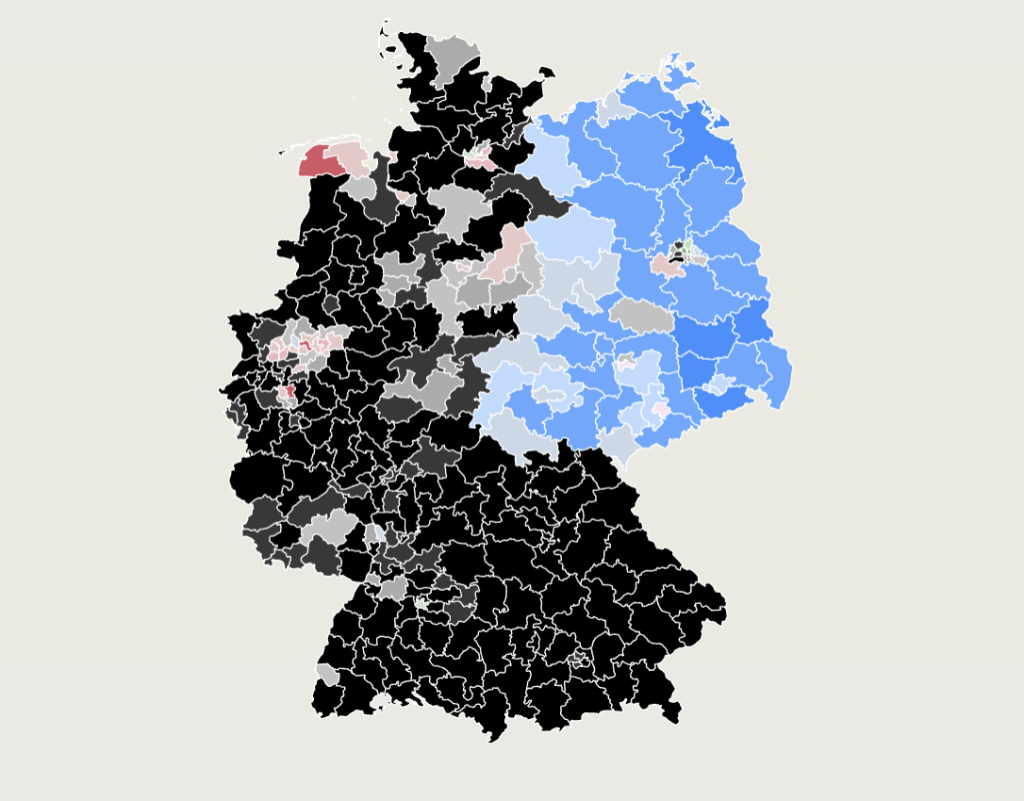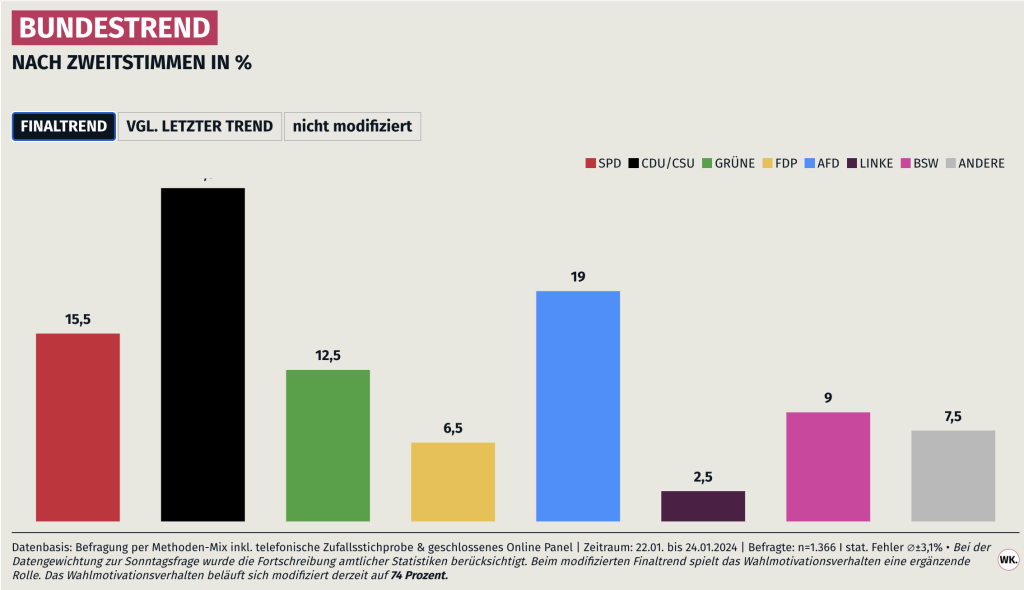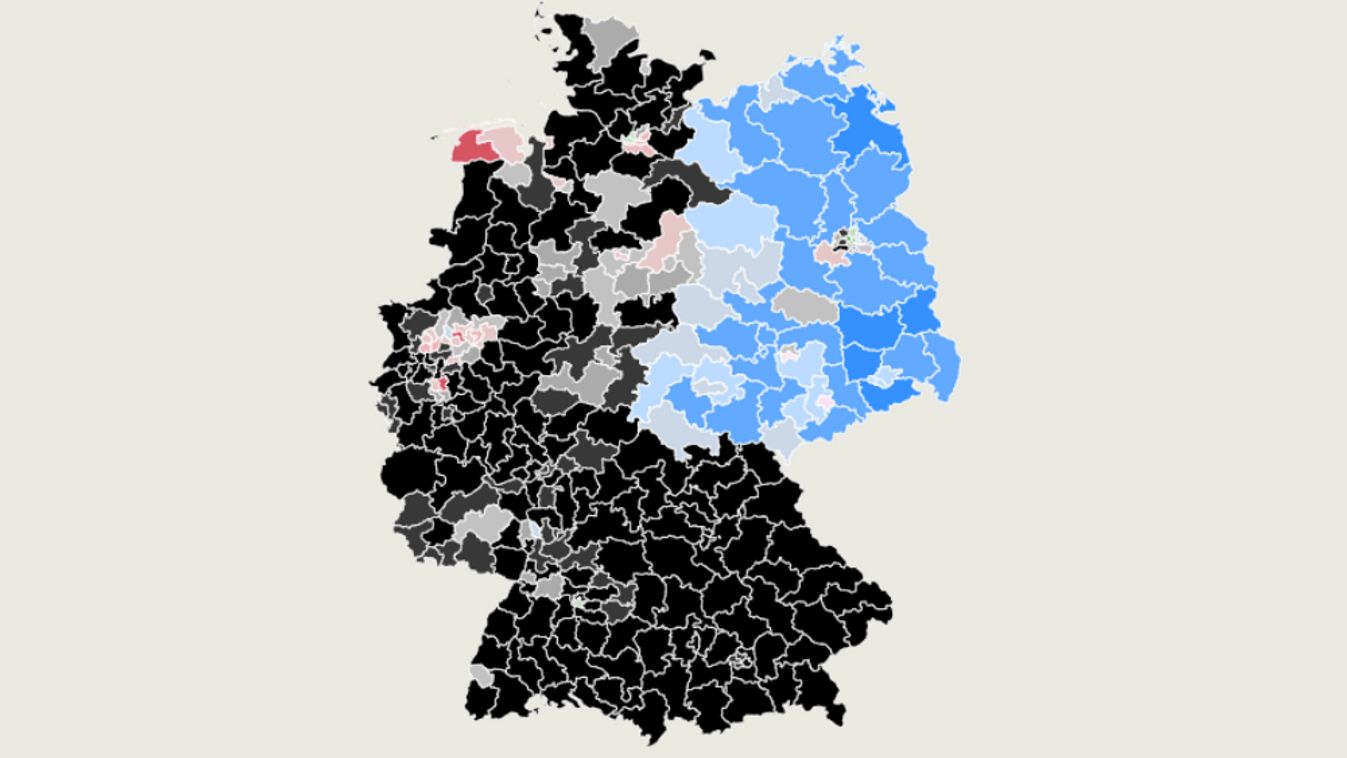A map recently published by German poll aggregator Wahlkreisprognose shows that in the former East Germany Alternative für Deutschland (AfD) has a clear lead in almost the entire former German Democratic Republic while the western part is overwhelmingly dominated by the conservative CDU and its Bavarian sister party CSU.
In other words, the country is sharply divided along what was once formerly West Germany and East Germany (GDR).
In the map, the Institute has colored Germany’s Bundestag constituencies according to party preference. The black color represents the center-right Christian Democratic Union (CDU), the blue color the Alternative for Germany (AfD), the red color the Social Democratic Party of Germany (SPD), and the green color the Greens. The fainter the color, the smaller the lead of the party in the constituency, and the darker the color, the more dominant the party is.

The CDU dominates in western Germany outside the big cities, and the AfD in eastern Germany outside Berlin.
The CDU and AfD are perfectly aligned with the former border between the former German Democratic Republic and the former West Germany.
The exceptions are minimal: In the north of Leipzig, the CDU has a narrow lead, while in the south the new party of Sahra Wagenknecht leads, the Sahra Wagenknecht Alliance (BSW), which has split from the Left Party. The BSW also holds a nose-to-nose lead in the former Karl-Marx-Stadt, now known as Chemnitz.
Overall, the CDU scores 27 percent nationwide in the new poll, while the AfD has 19 percent.

Berlin has perhaps the most complicated political map: In the districts of Steglitz-Zehlendorf, Reinickendorf, Spandau, Tempelhof-Schöneberg, Neukölln and Charlottenburg-Wilmersdorf, the CDU is flying the flag, while Friedrichshain-Kreuzberg, the city center and Pankow are with the Greens.
Treptow-Köpenick is holding its own with the Left Party, and Lichtenberg and Marzahn-Hellersdorf are leaning towards the AfD. The area around Potsdam is the only one to sympathize with the governing SPD. In addition, the whole of former East Germany shows the most popular party is the AfD.
In West Germany, on the other hand, the AfD was able to take a nose-to-nose lead in only two places, and surprisingly, these were in affluent urban districts: Gelsenkirchen in the Ruhr and Mannheim, the second-largest city in Baden-Württemberg.






